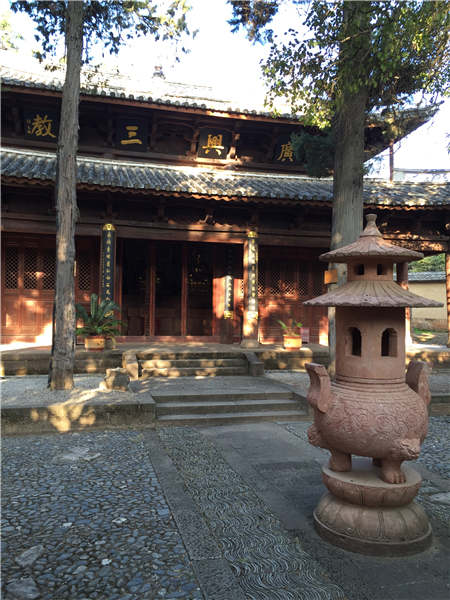A slice of ancient folk culture
By Yang Feiyue ( China Daily ) Updated: 2016-01-30 07:23:32
 |
|
Xingjiao Temple in the Sideng street |
The local government is now hoping to use Shaxi's aboriginal environment and folk customs to develop tourism and help locals get out of poverty.
The township's Sideng Street has a lot of cultural heritage, including the Xingjiao Temple and an ancient stage.
The town reflects the role of Shaxi in ancient times when horse caravans carrying tea or other products would stop here on their way to Tibet. They would replenish their supplies by bartering their goods with the locals.
Then, visitors would pass their time by watching performances on the central stage or visit the temple to pray for a safe journey to Tibet, says Pu Ligui, executive deputy director of the Jianchuan tourism authority.
The Xingjiao Temple has stood for nearly six hundred years and has murals from the Ming Dynasty.
The temple's wood structure has withstood earthquakes and has been even copied by the Japanese, says Dong Zengxu, an expert in ethnic Bai culture.
The ancient stage in the center of the township was built in the reign of Chinese emperor Kangxi of the Qing Dynasty (1644-1911) and the Bai people would perform ethnic dances and sing there during major holidays, such as the Benzhu celebrations and the Spring Festival. Benzhu is a god worshipped by the Bai people.
In 2002, the World Monuments Heritage Foundation put Sideng Street at 101 on the world's endangered building list.
|
|
|
|
|
|
|
|

























 Raymond Zhou:
Raymond Zhou: Pauline D Loh:
Pauline D Loh: Hot Pot
Hot Pot Eco China
Eco China China Dream
China Dream China Face
China Face






